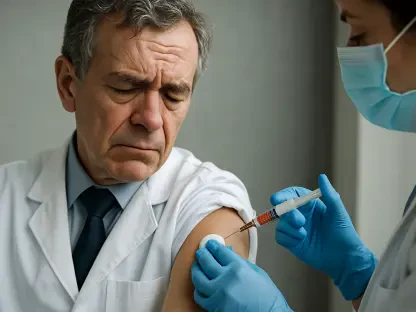The dawn of biosecurity challenges confronting the agriculture sector necessitates proactive measures by farm operators to safeguard livestock and crops. This pursuit of a fortified barrier against biosecurity threats is essential for sustaining productivity and ensuring the health of farm resources. Addressing these challenges requires meticulous planning and implementation of effective biosecurity strategies. Farm operators must consider all factors that influence their unique environmental conditions and optimize preventive strategies to ensure robust protection against diseases. Building a resilient biosecurity framework involves understanding the intricacies of potential threats, devising comprehensive action plans, and ensuring all stakeholders adhere to best practices. This article explores key methods farms can utilize to establish an impregnable defense against biosecurity risks.
Planning and Strategy Integration
Creating a formidable biosecurity plan is fundamental to establishing protective measures for farms against external threats. Farm operators must chart detailed maps, indicating boundaries alongside insights into livestock housing, grazing areas, and natural elements such as rivers or streams. Integral to this is the appointment of a biosecurity champion—a dedicated individual accountable for comprehensive planning and execution of biosecurity strategies. This champion must maintain familiarity with livestock health and daily operations while simultaneously identifying disease risks inherent to specific types of livestock. A biosecurity plan should also contain emergency and regular contact lists, ensuring swift communication during critical situations. By developing a risk matrix aligned with biosecurity plans, a farm can ensure daily adherence to protective steps, furnish training on biosecurity expectations, and revise plans to reflect current disease dynamics.
Furthermore, during disease outbreaks, the enhanced biosecurity plan must be vigorously implemented to neutralize potential risks. Building awareness and adherence to the biosecurity plan among farm stakeholders is also crucial, facilitating a unified and comprehensive defensive posture. Implementation serves as the grounding factor where theoretical plans convert into concrete actions, primarily focusing on prevention, preparation, and response during an outbreak. Periodic evaluations reflect adjustments that keep the plan relevant and sharp amidst evolving risks and challenges.
Visitor Management and Risk Assessment
Visitor management forms a core facet of a biosecurity framework, with the principal aim of regulating all visitors and vehicles entering the farm premises. Documenting visitors’ information, including their recent locations, in a logbook enhances traceability and awareness. Farms should establish clear zones that separate visitors from livestock, using visible signage to highlight safe routes or areas where visitors can park. Washing stations must be installed within these zones, allowing for adequate cleaning and disinfection of visitors and vehicles. Infrastructure for visitor management promotes hygiene and minimizes the introduction of potential disease vectors into livestock areas.
Simultaneously, farms must perform risk assessments that extend beyond direct agricultural operations to encompass any ancillary businesses present on the farm. By evaluating risk factors associated with external activities, farm owners can develop robust risk registers that detail potential hazards posed by storage facilities, deliveries, or security practices related to feed and bedding. Neighboring land use must also be scrutinized for potential risks, ensuring preventive measures are implemented against specific threats. Assessing the risks associated with different livestock species, off-farm locations, and equipment usage contributes to an exhaustive understanding of the operational landscape. This realization informs decisions that safeguard animal health and ultimately preserve farm integrity.
Conclusion
Crafting an effective biosecurity plan is essential for shielding farms against external threats. Farm operators need to create detailed maps outlining boundaries, livestock housing, grazing spaces, and natural features like rivers or streams. Central to this plan is the designation of a biosecurity champion—an individual tasked with thorough planning and execution of biosecurity measures. This person must be well-versed in livestock health and daily operations while evaluating disease risks linked to particular livestock types. A biosecurity plan should also feature emergency and regular contact lists for rapid communication during urgent situations. Constructing a risk matrix in alignment with biosecurity plans helps ensure consistent application of protective protocols, provides training on biosecurity expectations, and allows for timely updates reflecting new disease conditions.
During outbreaks, it’s vital to enforce the enhanced biosecurity plan to neutralize risks. Cultivating awareness and cooperation among farm stakeholders is essential for a cohesive defense strategy. Regular evaluations help refine the plan, maintaining its relevance amid evolving challenges.









